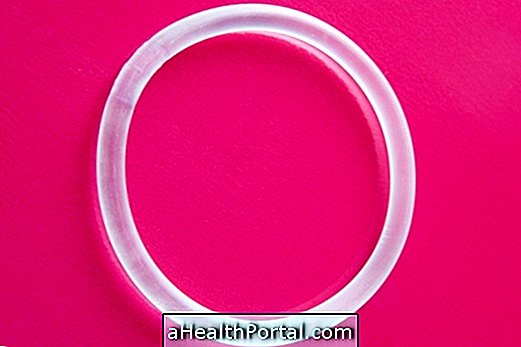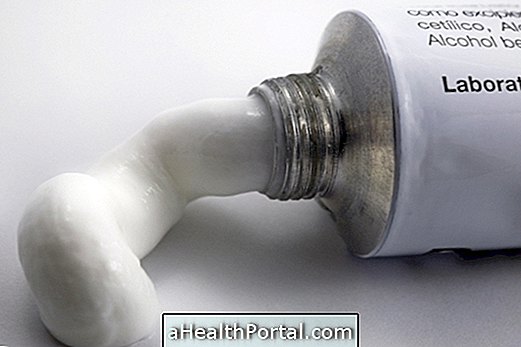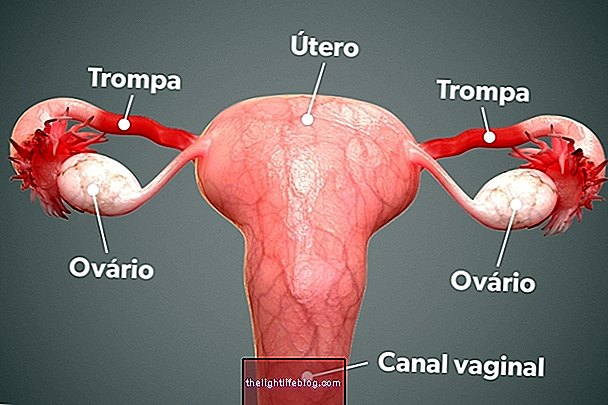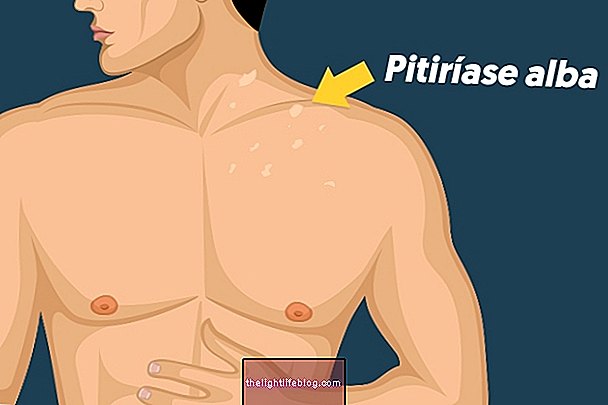The vaginal ring is a kind of ring-shaped contraceptive method with about 5 centimeters, which is made of flexible silicone and which is inserted into the vagina, so as to prevent ovulation and gestation through the gradual release of hormones.
This method should be used for 3 weeks in a row and after that time it should be withdrawn, taking a break of 1 week, before reinserting a new ring. When used correctly, this contraceptive method has an efficacy greater than 99%, being similar to the condom, avoiding an unwanted pregnancy.
The contraceptive ring is quite comfortable because it is made of a flexible material that adapts to the contours of the region, positioning itself in a less sensitive portion of the vagina, even during intimate contact.

Price and where to buy
This type of contraceptive method can be bought in conventional pharmacies, without the need of a prescription, and its price ranges between 40 and 70 reais. One of the best known trade names of the vaginal ring is Nuvaring, there are other brands like Circlet, for example.
How it works
The vaginal ring is made from a type of silicone that contains synthetic versions of the female hormones progesterone and estrogen. These two hormones are released over 3 weeks and cause the ovaries not to produce a new egg, preventing fertilization and hence a possible pregnancy.
After the 3 weeks of ring use, it is necessary to take a break of 1 week to allow menstruation to appear before placing the new ring.
How to put the vaginal ring
The vaginal ring should be inserted into the vagina on the first day of menstruation. To do this, follow these steps:
- Check the shelf life of the ring;
- Wash hands before opening the package and hold the ring;
- Choose a comfortable position, such as standing with one leg elevated or lying down, for example;
- Hold the ring between the index finger and thumb, tightening it until it is shaped like an "8";
- Insert the ring gently into the vagina and gently push with the indicator.
The exact location of the ring is not important for its operation, so every woman should try to position it where it is most comfortable.
After the 3 weeks of use, the ring can be removed by inserting the index finger into the vagina and gently pulling it out. Then it should be put in the packaging and thrown away.
When replacing the
The ring needs to be removed after 3 weeks of continuous use; however, it should only be replaced after 1 week of rest. That way, this method needs to be placed every 4 weeks.
A practical example is: if you put the ring on a Saturday at around 9 pm, you should take it off 3 weeks later, or on a Saturday at 9:00 p.m. The new ring should be placed exactly 1 week later, that is, next Saturday at 9pm.
If it is more than 3 hours after the time for the new ring, it is recommended to use another contraceptive method, such as a condom, for 7 days, as the ring effect may be decreased.
Main advantages and disadvantages
The vaginal ring is one of several contraceptive methods available and therefore has advantages and disadvantages that should be evaluated by each woman when selecting a contraceptive:
| Benefits | Disadvantages |
| It is not uncomfortable and does not interfere with sexual intercourse. | It has side effects like weight gain, nausea, headache or acne. |
| It only needs to be placed once a month. | It does not protect against sexually transmitted diseases such as condoms. |
| Allows up to 3 hours to be forgotten to replace the ring. | It is important to insert the ring at the same time to avoid damaging the effect. |
| Helps regulate periods and reduce menstrual cramps. | It can not be used in a number of cases, such as liver problems or high blood pressure. |
What to do if the ring comes out
In some cases the vaginal ring may be involuntarily expelled into the panties, for example. In these cases, the guidelines vary according to how long the ring has been outside the vagina:
- Less than 3 hours
The ring should be washed with soap and water and then put back into the vagina. Up to 3 hours, the effect of this method continues to protect against a possible pregnancy and, therefore, it is not necessary to use another contraceptive method.
- More than 3 hours in the 1st and 2nd week
In these cases, the effect of the ring may be compromised and therefore, in addition to washing and reattaching the ring in the vagina, another contraceptive method, such as a condom or spermicide, should be used for 7 days. If the ring goes out during the first week, and an unprotected intimate relationship has occurred, there is a risk of a possible pregnancy.
- More than 3 hours in the 3rd week
In this case, the woman should throw the ring in the trash and then choose one of the following options:
- Start using a new ring without pausing for 1 week. During this time the woman may not have menstrual bleeding, but may have some irregular bleeding.
- Pause for 7 days and insert a new ring after pause. During this period the woman is expected to have her menses. This option should only be selected if, before this time, the ring has been at least 7 days inside the vaginal canal.
If you forget to insert the ring after pausing
If there is forgetfulness and the pause is longer than 7 days, it is advisable to place the new ring as soon as you remember and start the 3 weeks of use from that day. It is also important to use another method of contraception for at least 7 days to avoid pregnancy. If unprotected intimate contact has occurred during the break, there is a risk of pregnancy and the gynecologist should be consulted.

Possible side effects
Like any other hormone remedy, the ring has side effects that may occur in some women:
- Belly pain and nausea;
- Frequent vaginal infections;
- Headache or migraine;
- Decreased libido;
- Weight gain;
- Painful menstrual periods.
In addition, there is still an increased risk of problems such as high blood pressure, urinary tract infection, fluid retention and clot formation.
Who should not use the ring
The contraceptive ring should not be used by women who have conditions that affect blood clotting, are bedridden due to surgery, have had a heart attack or stroke, have angina pectoris, have severe diabetes, high blood pressure, high cholesterol, some type of migraine, pancreatitis, liver disease, liver tumor, breast cancer, unexplained vaginal bleeding or allergy to ethinyl estradiol or etonogestrel.
Therefore, it is advisable to consult the gynecologist before using this contraceptive method, to evaluate the safety of its use.























